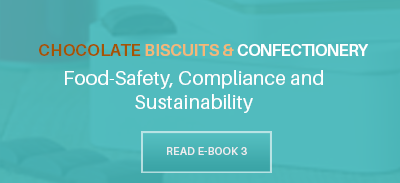Food packaging is much different today than most of the 20th century. It has gone through a metamorphosis from plain, simple and utility-based packaging to more elaborate and creative designs. Metal is steadily gaining favor over plastic for sustainability reasons, as consumers are becoming increasingly more aware of environmental issues. Here's a deeper look at important food packaging trends heading into the 2020s.
Governments Turning Against Plastic
 Plastic has come under intense scrutiny due to the fact that it's a petroleum product that contains toxins. When plastic is thrown into rivers and oceans it kills marine life that mistaken it for food. Then when people eat these polluted fish, it can cause serious health problems. Although plastic can be recycled, much of it ends up in landfills. It's not as durable as other packaging materials, which is partly why metal is so popular.
Plastic has come under intense scrutiny due to the fact that it's a petroleum product that contains toxins. When plastic is thrown into rivers and oceans it kills marine life that mistaken it for food. Then when people eat these polluted fish, it can cause serious health problems. Although plastic can be recycled, much of it ends up in landfills. It's not as durable as other packaging materials, which is partly why metal is so popular.
In the United States, California has led the way in banning plastic bags from major retail stores, as mandated by state voters in the 2016 election. This action inspired several other North American cities to construct similar legislation that puts bans on plastic bags and requires recycling programs. Australia's government has ruled that by 2025 all packaging within the nation must be recyclable, compostable or reusable. Vancouver recently banned plastic straws starting in 2019.
Why Metal Is Here To Stay
Metal packaging satisfies many needs required to preserve and product food from contamination, giving it a long shelf life in retail stores. Compared with other packaging materials, metals such as aluminum or steel offer the most sustainable qualities. These metals are 100% recyclable without any loss in quality. The reason aluminum cans are so common is that they are lightweight, unbreakable and protect food products well.
Among food, beverages and personal care products in the global metal food packaging market, food packaging accounted for nearly 27% market share in 2017, according to researcher Technavio. That share is expected to increase by 2022, while beverage packaging is the fastest growing segment. North and South America are currently the leaders in global metal packaging, accounting for a market share of 38%. The overall global metal packaging market is projected to surpass $135 billion by 2020, according to research firm Markets and Markets.
Flexible Aluminum Shapes
Another reason why aluminum is such a popular packaging choice is that the material is soft yet sturdy and flexible, allowing it to be cut into any shape imaginable. In this era of creative packaging, designers must capture attention in multiple ways, which can be done with unique shapes. Tinplate can also be cut into various shapes, making it another viable choice for style, as well as longevity.
Since aluminum cans may be easily compressed after usage, they are easy to store until they are delivered to a recycling center. Global recycling rates for aluminum cans have reached 75%, making them the most popular type of beverage container to be recycled.
Prevalent Packaging Trends
One of the emerging trends in food packaging due to growing health awareness is that consumers are demanding cleaner and clearer labeling on packages. Consumers are growing tired of information overload and just want the most relevant facts, such as ingredients and nutritional facts.
More and more consumers are finally reading labels to make sure they know what they're putting into their bodies. In the UK, for example, 58% of consumers say they read ingredients on food labels, according to a 2016 article published by Packaging Digest. Consumers also want larger fonts for ingredients, which convey a sense of trust, compared with fine print that requires a magnifying glass.
Obviously, packagers have been aiming to appeal to multiple senses in an aggressive way, which has become overdone in some cases. Pale colours suggest a more relaxed presentation, as companies are moving away from the old guideline for brands to stick with consistent colours in logos and packaging. The "less is more" ethic tends to reappear as a relief sometimes.
Millennial Influence
A major concern for food packaging designers is the rise of millennials in the marketplace, now representing over a quarter of the world's population. Millennials are expected to overtake baby boomers by 2019 in the United States in terms of number of individuals, according to Pew Research. This shift in demographics is important to analyze since millennials favor sustainability. Food Industry Executive reported in 2016 that 81% of millennials are willing to pay more for healthy foods.
Conclusion
Despite the demand for more clarity in labeling and less clutter, consumers still gravitate toward artistic designs on packages, making it a crucial part of branding. Packaging designers cannot afford to rest on their laurels, as innovation is a driving force behind successful products these days. Paying attention to sustainability is another major trend, in which metals are the clear solution.






